Huffman Compression
Variable-length codes
Use different number of bits to encode different chars
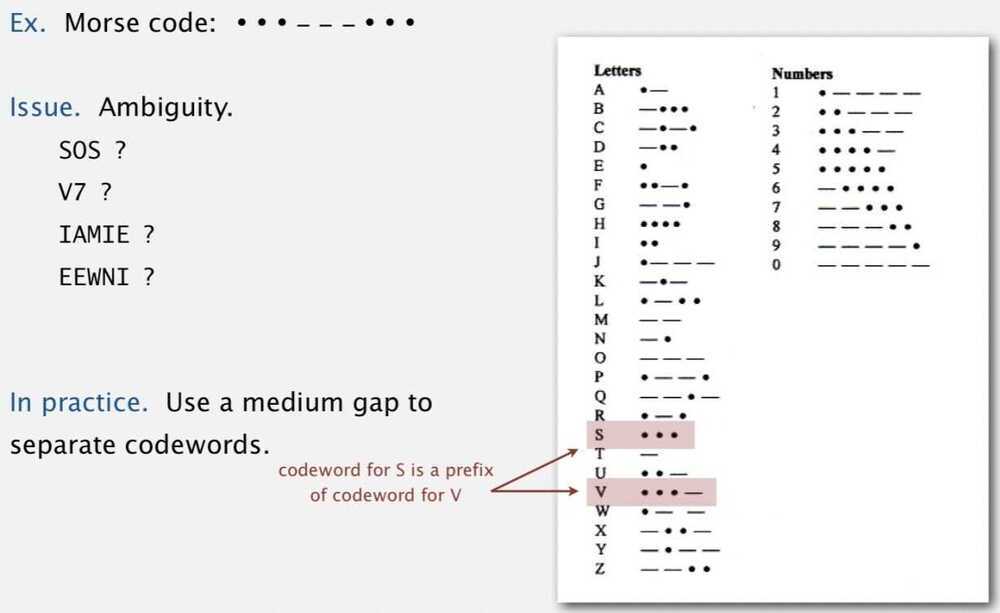
Que: How do we avoid ambiguity?
Ans: Ensure that no condeword is a prefix of another
Ex 1: Fixed-length code
Ex 2: Append special stop char to each codeword
Ex 3: General prefix-free code
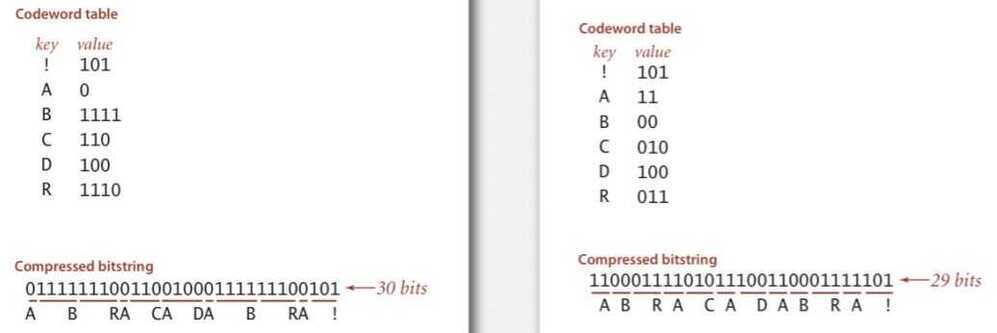
Prefix-free codes: trie representation
Que: How to represent the prefix-free code?
Ans: A binary trie
- Chars in leaves
- Codeword is path from root to leaf
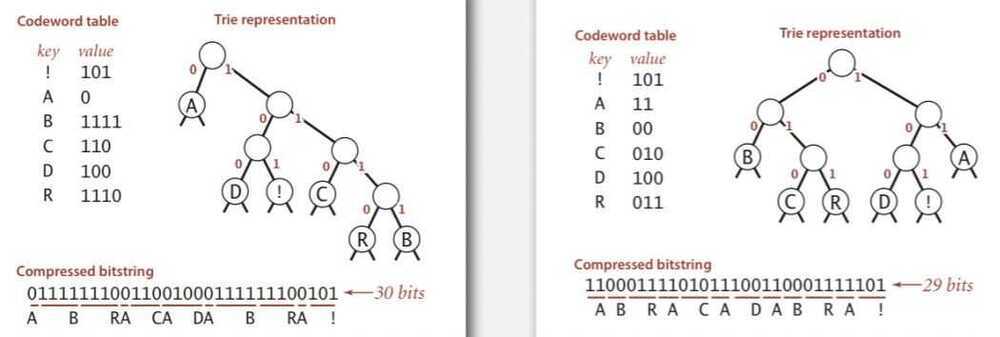
Compression
- Method 1: start at leaf; follow path up to the root; print bits in reverse
- Method 2: create ST of key-value pairs
Expansion
- Start at root
- Go left if bit is 0; go right if 1
- If leaf node, print char and return to root
Huffman trie node data type
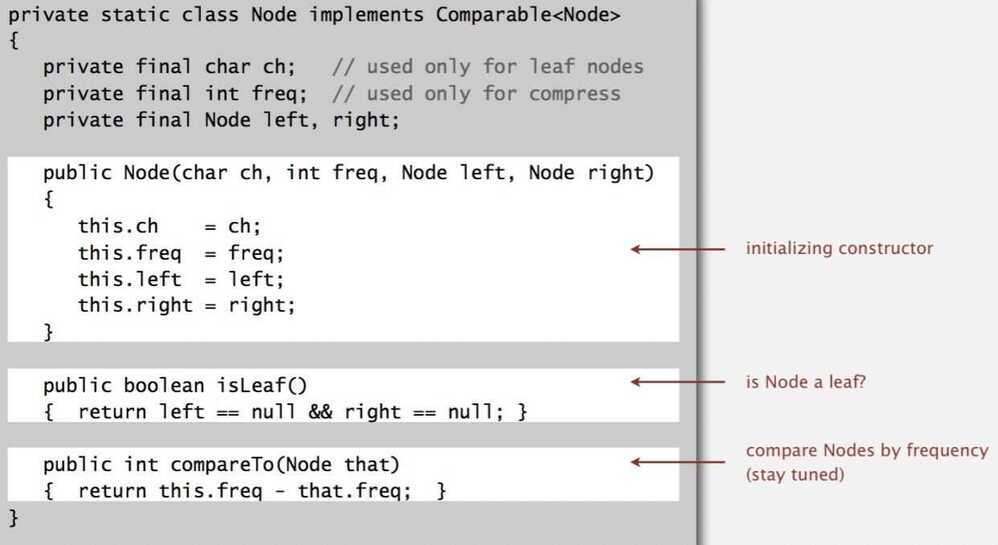
Prefix-free codes: expansion
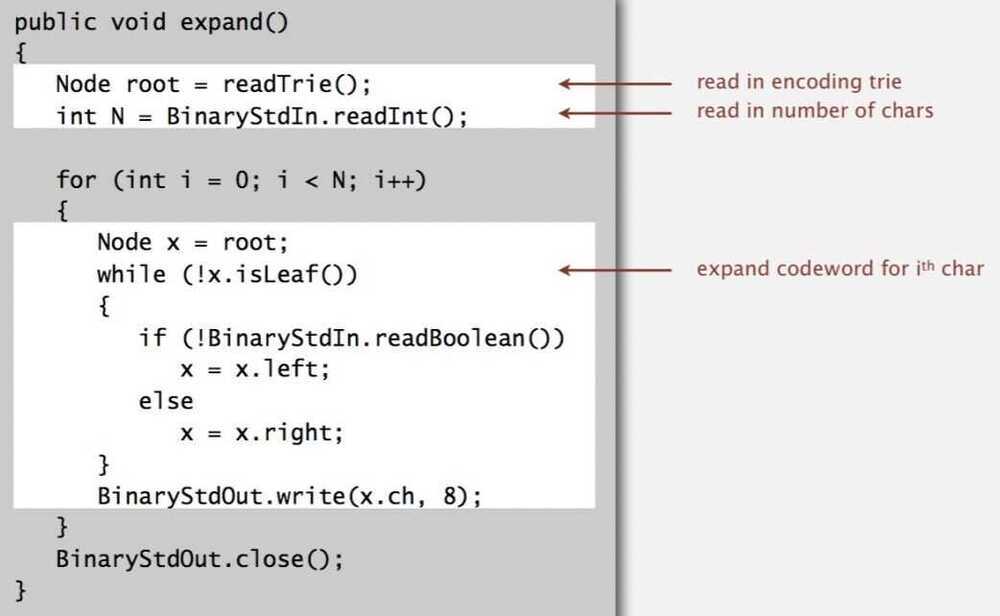
Running time: Linear in input size N
How to transmit
Que: How to write the trie?
Ans: Write preorder traversal of trie; mark leaf and internal nodes with a bit
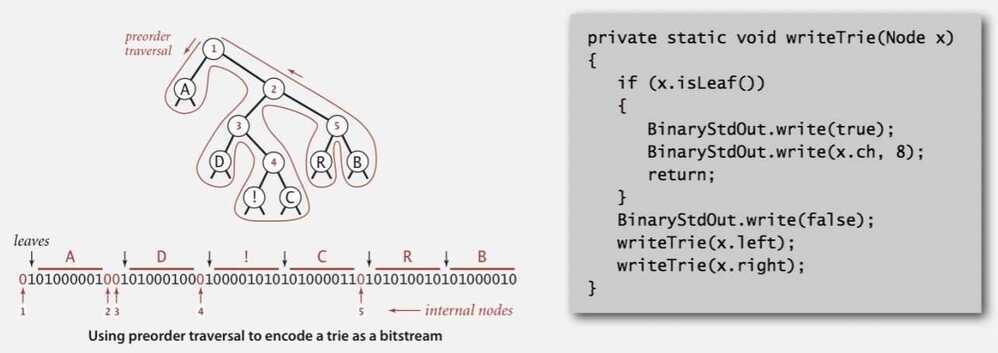
Note: If message is long, overhead of transmitting trie is small
Que: How to read in the trie?
Ans: Reconstruct from preorder traversal of trie

Shannon-Fano codes
Que: How to find best prefix-free code?
Shannon-Fano algorithm:
- Partition symbols S into two subsets S
0and S1of (roughly) equal freq - Codewords for symbols in S
0start with 0; for symbols in S1start with 1 - Recur in S
0and S1.
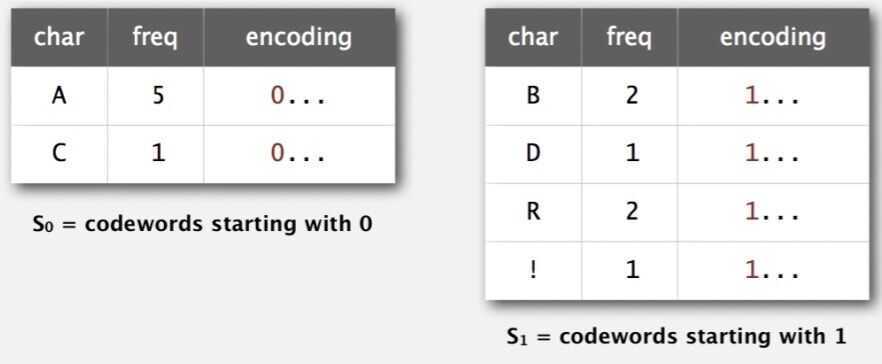
Problem 1: How to divide up symbols?
Problem 2: Not optimal
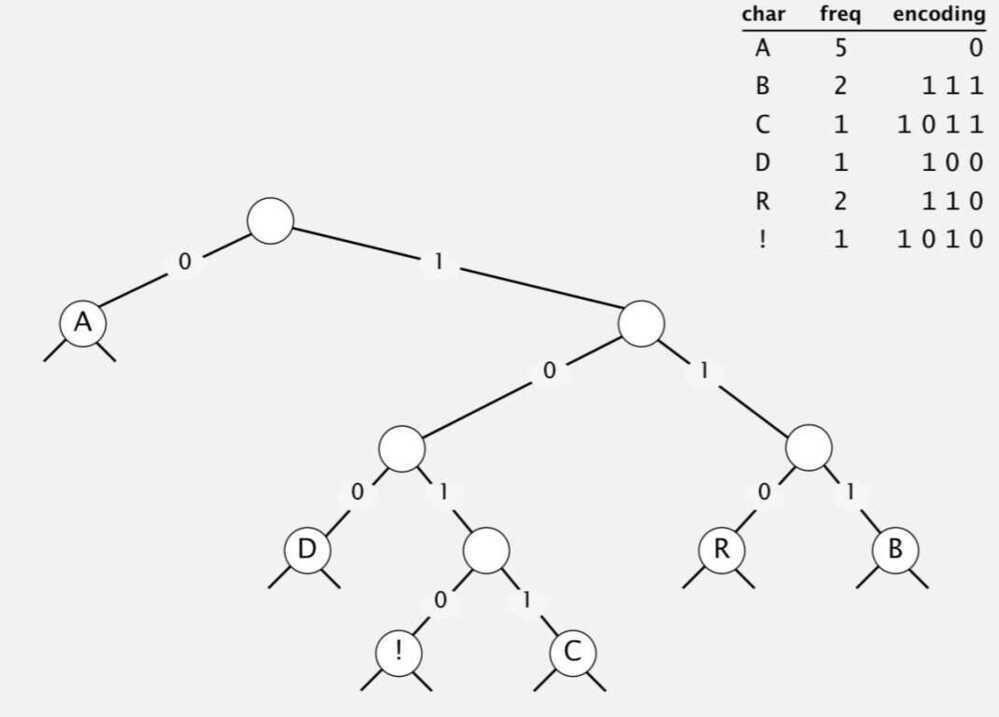
Huffman codes
Que: How to find best prefix-free code?
Huffman algorithm:
- Count frequency freq[i] for each char i in input
- Start with one node corresponding to each char i (with weight freq[i])
- Repeat until single trie formed:
- Select two tries with min weight freq[i] and freq[j]
- merge into single trie with weight freq[i] + freq[j]
Constructing a Huffman encoding trie: Java implementation
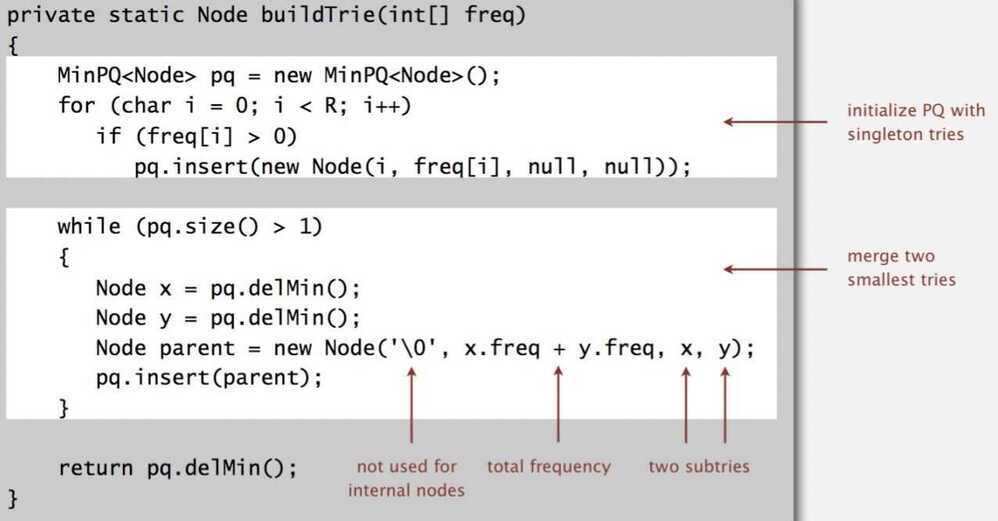
Huffman encoding summary
Proposition: Huffman algorithm produces an optimal prefix-free code
Implementation:
Pass 1: tabulate char frequencies and build trie
Pass 2: encode file by traversing frie or lookup table
Running time: Using a binary heap => N+R log R
